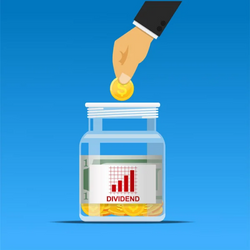Exploring Investment Options: Navigating the Stock Market with Confidence Unsure about where to invest? While the market offers many choices, the stock market remains a premier option for robust returns.
Despite concerns about its volatility and complexity, a basic understanding can demystify these aspects. Our comprehensive guide delves into the essentials of stocks, covering various types, options, and much more. By the end of this article, you’ll have a foundational grasp of the stock industry, paving the way for informed investment decisions. Let’s embark on this enlightening journey together.
Ready to dive into stock investing?
Our detailed guides provide you with a comprehensive understanding. These guides are designed for both beginners and seasoned investors, offering insights into various aspects of stock investment.
Each guide is crafted to enhance your knowledge and confidence in the stock market. Start your investment journey by exploring these in-depth resources.
How to Buy Stocks
Contents
- 1 Ready to dive into stock investing?
- 2 How to Buy Stocks
- 3 What are Stocks?
- 4 Types of Stocks
- 5 All of our Best Stock Reviews
- 6 Best Common Stocks
- 7 Pros
- 8 Cons
- 9 Best Preferred Stock
- 10 Cyclical Stocks & Non-Cyclical Stocks
- 11 Best Value Stocks
- 12 Pros
- 13 Cons
- 14 Penny Stocks
- 15 Safe Stocks
- 16 Pros
- 17 Cons
- 18 5G Stocks
- 19 History of Stock and Share Market
- 20 Further Understanding
- 21 Equity Ownership and Shareholders
- 22 How to Invest in Stocks: Beginner’s Guide
- 23 What kind of Investor are you?
- 24 Stock Investment: Step by Step Guide
- 25 What are Shares?
- 26 How to Invest in Shares?
- 27 Stocks vs. Shares What’s the Difference
- 28 Invest in Stocks & Shares in 2024: Connect Today!
- 29 FAQ
What are Stocks?
Stocks, also known as equities, are financial securities representing ownership in a corporation, entitling owners to a share of the company’s assets and profits.
The value and returns from stocks depend on the number of shares owned. While most stock trading occurs on stock exchanges, private dealer transactions are also possible, subject to national laws to avoid fraud. Historically, stocks have outperformed other investments like real estate, and the rise of online stockbrokers has further popularized stock investing.
Types of Stocks
You can find multiple stocks in the market. Each type of stock has its benefits and drawbacks. It is difficult to discuss all the stocks in full detail, but we will start by discussing some of the most common types of stocks to help you make an informed decision.
- Common Stocks: Provide ownership in a company and potential voting rights.
- Preferred Stocks: Offer fixed dividends and priority in liquidation.
- Growth Stocks: Represent fast-growing companies.
- Value Stocks: Are undervalued compared to their fundamentals.
- Dividend Stocks: Known for regular dividend payouts.
- Blue-Chip Stocks: From well-established, financially sound companies.
- Penny Stocks: Low-priced stocks of smaller companies.
Make sure that you assess these stock types separately for your next stock investment.
All of our Best Stock Reviews
Discover our best stock articles, a collection of concise and powerful insights. Uncover expert strategies, market trends, and risk management techniques in just a few clicks. These articles empower you with the knowledge needed to navigate the stock market and maximize your investment potential.
Best Common Stocks
Common stocks are the security and ownership of a shareholder. The common stockholders can elect the board of directors of a firm, or present their vote on company policies. Common stocks usually have higher return rates in the long term.
These common stocks can also be easily liquidated, and come with legal liability options. However, they have higher market and volatility risks.
If a company goes bankrupt, common stockholders do not get their investments back until the shareholders receive their investments. However, these stocks usually outperform other options like bonds and real estate for a lower investment.
The common stocks have been around since 1602 when the Dutch East India Company became a part of the Amsterdam Stock Exchange. Even today, these stocks have good market value and remain a popular option for stock investors globally.
Pros
- Voting power
- Higher return rates
- Easy liquidation
- Legal liability limitation.
Cons
- Higher market risks
- More volatile
Best Preferred Stock
Preferred stocks are somewhat similar to common stocks. However, they have priority over common stocks. This applies to cases involving dividends, making the preferred stocks a highly rewarding option. There is a benchmark interest rate that you can apply to the preferred stocks and users can find them as a percentage in the description.
Many experts believe that preferred stocks are better than common stocks and bonds, especially because common stocks have higher volatility rates. Preferred stocks offer holders consistent payments (dividend). However, these shares have a fixed face value.
Preferred stocks are not a debt and owners need to repay them on time. Moreover, profits and income from the preferred stocks get a proficient tax treatment because the dividends usually get a tax amount lower than others like bond profits.
Companies may choose to lower the dividend value if they underperform. This makes it a lot riskier to invest in preferred stocks. However, those who understand the industry know how to handle it.
- Higher dividend
- Asset access property
- Callable shares
- Preferred stocks to common stock conversion
- Few or no voting rights
- Low capital gain potential
- Low capital loss risk
Cyclical Stocks & Non-Cyclical Stocks
Cyclical stocks have a direct relationship with the local economy. On the other hand, non-cyclical ones outperform the market under economic distress. Most cyclical companies perform well with their services during economic stability.
Most of these companies sell luxury goods. The non-cyclical companies are the ones focused more on staple goods. These can include basics like food, clothing, medicine, etc.
The cyclical stocks go up and down with the economy, whereas, the non-cyclical ones remain independent. It is why people focus on creating a mixed portfolio with cyclical and non-cyclical stocks.
Investing in non-cyclical stocks allows people to enjoy benefits even if the accumulative economy is not doing well.
Cyclical stocks, on the other hand, perform well when the economy improves. This way, investing in these stocks is financially beneficia; in the long run. You will find people investing in these stocks mainly because of their diversification.
| Cyclical Stocks | Non-Cyclical Stocks |
|---|---|
| Higher economic returns | No falls during recessions |
| Massive growth | Outperforms economic growth patterns |
| Interest rate stimulus | Always in demand |
| More volatile | Best during falling interest rates |
Best Value Stocks
Value stocks are corporations that provide equity for a lower value compared to their fundamentals. If you’re looking for an example, you can easily compare it to a growth stock. You’ll most likely yield better benefits with your investments if you choose value stocks. Here are a few reasons why value stocks can help you:
Some of the stocks in the market may come with higher dividend yields, but there is no guarantee that those will lead to higher returns for investors. What’s more, these stocks have a low P/B ratio, as well as a low P/E ratio. You will also find a bargain price with these stocks, mainly because other investors in the market deem it less favorable.
A common strategy you’ll find is investing in the top 10 yielding stocks at the beginning of the year and then adjusting one’s portfolio accordingly.
However, these value stocks are usually riskier than other growth stocks you will find. That’s because the market is skeptical about these stocks, and they do not seem promising. Finding a value stock that pays stable and high dividends is not an easy task and requires thorough analysis and research to find one.
Pros
- Lower risks mostly
- Higher rewards
- More ROI
Cons
- Requires more time
- Requires investor mindset
- Intrinsic Value requirement
Penny Stocks
Investors can find stocks in almost any price range depending on the company. However, equities under the $5 range count as penny stocks. Many of these penny stocks also deal in large places such as New York Stock Exchange through privately owned OTC market groups. The prices of these penny stocks were different in the past. Records reveal these stocks ranged as less as $1. However, the U.S. Securities and Exchange Commission (SEC) qualifies it as under $5 now. This allows better security for investors responsible for the orderly functioning of the market.
Most of the penny stock companies you will find are very small and lack liquidity. Thus, you will find it fairly difficult to sell these stocks off to someone in the market. Finding the right price for these stocks while selling them off is equally challenging because there’s always a risk of losing a huge portion of your investment.
For this reason, volatility in penny stocks is quite common. You could invest in a penny stock and watch your investment drop within a day if the company suffers a major loss.
This can be even more troublesome for investors who buy their assets on a margin as it usually involves taking money from a bank or a private investor at higher interest rates.
You will need to make up for the amount of loss as well as the investment difference. However, simple techniques like having a stop-loss order before you invest in these penny stocks can help. It will allow you to set a particular price when you want to pull out of the market.
In order to understand whether the investment is a good fit for you, one needs to perform own research focusing on own strategy and particular aspects that are important for the investor.
Most of penny stocks result in losses because of lack of information, history, fraud and liquidity, etc.
Here’s a list of some pros and cons you’ll get by investing in penny stocks.
- Allows access to larger marketplace access
- Allows companies to grow via public funding
- Upside in stock appreciation because of lower price.
- Lesser buying market
- Limited info availability
- Higher chances of fraud.
Safe Stocks
Volatility is a key player in the share market as each stock has a fair risk. While some people face massive losses, most stock investors stay afloat by making timely decisions and incorporating the right approaches. For instance, people who know how to pull out of the market before a market crash face minimal or no losses at all.
However, not everyone is lucky enough. Thus, a safer option like the safe stock is ideal for such people. Safe stocks, as the name suggests are safer to own and provide lower volatility.
The past few years are a perfect example of how the best companies can also suffer through financial depreciation, and land the investors in trouble. Investing in staple commodity stocks like food, power, construction, etc, is a good alternative.
Market assessment, understanding business trends, and socio-economic changes are some easy investments in safe stocks only. Generally, companies with good dividend yield, higher performance in recession periods, and decent financial standings are your best bet. Although there are no safe investments and there is always a risk of losing the entire capital invested some companies are considered by the market to be relatively more stable than others.
Here are the positive things you should know about safe stocks. Growth Stocks (Briefly explain)
Pros
- Better dividend yield
- Lower risk
- Higher ROI
Cons
- Higher share price
- Higher tax amount
- Emotionally draining
5G Stocks
Fifth Generation (5G) wireless tech is one of the most promising advancements in the telecom industry. Some sectors thus might be trendy for certain periods and due to large capital inflow those might seem growing in value. If you’ve ventured into the stock market, you must have come across at least one of these 5G Stocks. Companies like American Tower, Verizon, and many others fall under this banner.
Although people were a bit skeptical about the 5G stocks in the past, they are readily investing in the industry today. This is mainly because the stocks have high-yield potential, higher stock security, and growth chances. However, the sustainability of these 5G stocks is an important concern. It is still a must for investors to look into the 5G stocks because they are here to stay.
- Diversified options
- More dividend yield
- Better market performance
- Riskier investments
- Highly volatile
- Harder analysis
Reading all these options may sound great and you may have already made up your mind about what you want to invest in, but how does one invest in stocks? Well, let us discuss.
Stock and share are one of the oldest investment ideas that people have worked on. Researches indicate that Belgium created a stock exchange as early as 1531 in Antwerp.
Moneylenders and brokers would meet here to deal with individual, group, and governmental debts. However, there were no real stocks to deal with back in the 1500s. Thus, these markets would deal with large businesses as partners.
Historical records show that these businesses were used by investors for capital gains similar to stocks and shares nowadays. The British, Dutch, and French governments started allotting charters with East India in their name. Dealers would partner with investors who would finance their voyage to reduce risk, in exchange for a cut from the earnings.
Similarly, the investors reduced their risks by investing in multiple voyages, increasing their overall profits. The East India Company was the first organization to issue stocks in exchange for dividends, much like the current stock and share market. Information received from that period shows that companies were trying to sell more of their stocks to build larger fleets, carry more goods, and earn higher profits. They also joined hands with royal charters, reducing risk, and maximizing profits.
Further Understanding
Companies need capital to run their organization, and often time issue their shares to the market to gain this capital in exchange for equity ownership. The stockholder buys a portion of the corporation while investing in its shares.
The ownership ratio is the difference between the number of shares owned compared to the total number of outstanding shares. So, a person who owns 100 shares out of 1,000 shares owns 10% of the company value. This way, the shareholder has a part in both the earnings and the assets of the respective company.
Corporations are special because the law treats them as a person in legal processes. It means the companies can own property, file for tax returns and face lawsuit issues, etc. This simply means that the firm owns its assets, and the company property, not the stakeholders.
This simple difference also limits the liability between the shareholder and the corporation. For instance, a corporation may have to trade all its assets if it goes bankrupt, but it doesn’t include personal assets. The court cannot force a shareholder to trade their shares even if the price drops severely.
Similarly, if a shareholder goes bankrupt, they cannot trade the company’s assets to pay off the creditors.
A common mistake that some people make while dealing with corporation equity is assuming company ownership.
For example, if a person has 50% of the company assets, they do not own 50% of the company. Rather, they have 100% of half the company’s shares in the market.
This is what experts call the “separation of ownership and control”. However, stockholders do get some benefits and rights if they own a company’s equity.
For example, these shareholders can cast their votes in shareholder meetings for company decisions. Additionally, stockholders can also get dividends (i.e. the firm profits), and trade their shares to someone else in the market whenever they want.
The more equity a person has the more influential their vote is for the firm. This allows shareholders to control things (directly or indirectly) by appointing the right board of directors.
You can see this when a company trades another one. It trades off all its shares, and it is up to the board of directors to increase the company’s share value. These boards of directors can increase the company’s value by hiring more managers, chief executive officers, or other competent professionals to help run the company.
However, company management is not a concern for most shareholders. Instead, for some investors in that period the profits and dividends of the firm were one of the key aspects to making an investment decision.
How to Invest in Stocks: Beginner’s Guide
Investors like Warren Buffet need no introduction. He defines investment as “the process of laying out money now in the expectation of receiving more money in the future.” One of the major rules widely spoken amongst market participants is related to portfolio diversification.
Knowing the best places to invest your money is the first step towards better financial gains. We’ll start by assessing some basics like helping you identify your investor type.
What kind of Investor are you?
Before you invest your money, start by asking yourself this question “what kind of an investor am I?” the answer to this question revolves around identifying your financial goals. However, these goals come with a certain level of risk, which you may or may not want to take.
For instance, some professionals want you to play an essential role in a particular form of investment while others may ask you to invest anywhere and forget about it. Here are some key investment types for you to choose from:
- Stocks
- Bonds
- Exchange-traded funds (ETFs)
- Index funds
- Mutual funds.
Have a look at some of the best stock investor options you have in the market.
Online Brokers: Full Time vs. Discount Brokers
Stockbrokers can be full-time or discount professionals.
- Full-Time Brokers
The full-time professionals give a full range of stock investment services like retirement financial advice, healthcare, investment options, and almost everything money-related.
However, most of these full-time brokers deal with clients with higher net worth and are quite expensive. They can charge a particular percentage of your total assets, or charge an annual fee, depending on their policy.
Most of these brokers charge a minimal fee of $25,000, but, this price may vary according to clients. However, it’s justified considering their wide range of detailed services.
- Part-Time Brokers
Part-time brokers have a different approach and were less popular than they are now. These brokers have selective services. For instance, they can guide their clients about the best tools for investments and charge a fee for it. You’ll find basic consultation and suggestion options with these part-time brokers, which you might miss out on otherwise.
Stock Investment: Step by Step Guide
Try the following steps for your next stock investment:
Step 1: Choose the Right Method
Investors can pool their money in stocks through different means. Start by choosing the best course of action according to your case. For instance, you can choose between your stocks and funds yourself, where you need more information about account options.
You can also choose a robotic advisor to help you around with your financial investments. Robotic advisors are a low-cost money management solution. Many brokerage firms and independent professionals offer these services.
Lastly, you can invest in stocks through your employer, which is most common. This helps focus on the long-term benefit with a hands-on approach.
Step 2: Choose an Investing Account
Brokerage accounts are a must if you wish to start investing in stocks. Brokers and Robo-advisors both allow people to open their accounts, which provide the fastest and most cost-effective option for stock investors.
Step 3: Learn the Difference Between Stock and Fund Investment
Exchange-traded funds allow investors to buy fractions of various stocks throughout the market. This allows the investors to create a more diversified portfolio, and maximize their profits. These funds are also called equity mutual funds.
Investing in a particular company falls under individual stocks. You can still build a diversified portfolio with it, but it requires more time and research. It is also worth remembering that individuals stocks have higher volatility and risk factors.
Step 4: Set an Investment Budget
The right investment amount depends on the prices of the stocks you want. You will find stocks ranging from a few dollars to a few thousand dollars. We suggest you start with ETFs if you have a small budget. Mutual funds usually have a minimal price of $1,000. However, the right amount of investment depends on your financial goals and age. Just make sure you keep a small portion of your income for stock investment.
Step 5: Consider Long-Term Goals
The average stock market return has been around 10% in the past few decades. It is one of the reasons why investors might choose a particular industry. Experts believe that the stock market is an ideal option for long-term investors or those who want to earn big.
Remember that volatility is a must with the stock market, where your stocks will go up and down.
Most professionals believe that options like S&P 500 index fund are ideal for investors with a long-term investment mindset. Also, it is best not to look at your stocks every few days if you have made a long term investment.
Step 6: Manage your Portfolio
Successful stock investment isn’t a one-hit-wonder. It is more of a long process, requiring consistent investments. You need to keep an eye on better stock investment opportunities. Although it is considered that portfolio diversification might reduce risk, there is no one portfolio that has zero risk.
There are many different strategies and investment goals thus one needs to pick the steps that are most suitable for one’s circumstances, but there is more you need to think about. Let us move forward with discussing shares, how you can invest in them, and their difference compared to stocks.
Shares are equity units owned by a corporation. These shares are financial assets that allow equal distribution for any profits left.
Most companies declare these profits in the form of dividends, and the stock shareholder does not play a part in profit distribution.
In general, investors look at company earnings and prospects when making investment decisions. A company may issue preferred or common stocks to investors. Buying the stock of a company investors provide capital for the company to grow and invest in new projects.
However, investors do not need to repay the equity investors unlike a bond or a bank loan. Companies may have to pay dividends, but no interest on the investment. This makes equity one of the best ways for companies big and small to earn and operate through public funds.
Founders or partners of a company own its shares. This can include peer groups or venture capital. Additionally, the company can try to earn more funds by increasing share availability in the market. You may find these kinds of equity as an initial public offering (IPO)
Investing in shares is somewhat similar to stock investment. You need to have a dedicated investment account, preferably a brokerage account. Next, you need to decide on a particular investment amount and consider all the possible shares you wish to invest in. You can make the transaction with professional assistance through robo-advisors too.
There are a few tips you need to consider before investing in shares.
1. Choose the Right Investment Option
Finding the ideal share investment option is a must if you need financial stability. Assessing past share performance is not a big concern as compared to understanding its future projection. It is a common market practice to perform own research and analysis before making any investment decision.
2. Avoid Individual Shares in the Beginning
Investing in individual shares is risky, which is why first-time investors should avoid it in the beginning. However, you can proceed with individual shares once you understand how the market works.
3. Diversify your Share Portfolio
Diversifying the portfolio is assumed to be one of the ways to reduce the risk but it is not a guarantee of higher returns. Try focusing on making smaller share investments throughout various options, instead of placing all your eggs in one basket. This way, you’ll have better financial stability if some of your shares go down.
4. Prepare for a Downturn
There’s always a chance for loss when it comes to sharing investment. Anyone who wishes to invest must keep this risk in mind and prepare themselves. Most people find this nerve-wracking and end up panic selling their assets when something negative happens.
As long as you diversify, a single sinking share shouldn’t impact you too much. Notice that even index funds will fluctuate so there’s no way to reduce the risk to zero.
5. Stay Persistent with Long-Term Goals
A clear vision is important when it comes to share investments because you will come across multiple opportunities. You must stay persistent with long-term goals, in general professional investors suggest starting investing early even with small amounts in order to benefit from long-term compounding and gain an understanding of the capital markets.
Differences between stocks and shares are a bit blurry in the financial market. People in the U.S. generally use the two terms interchangeably. Both these terms refer to equities or financial securities that people can invest in.
Although people called them stock certificates in the past, it is more about the syntax, and sources of these two equities. Let’s assess the two terms separately.
Stocks
Investment professionals use the term stocks for publically traded companies. This can include blue-chip stocks, value stocks, energy stocks, or other types you come across. However, the stocks do not refer to the stocks themselves but to the corporation that issues these stocks to buyers.
Professionals also call the common stock types common and preferred stocks but still count them as shares. Common stocks grant investors better control over company policies and allow them to vote. Due to their volatile nature stocks are usually assumed to be long-run financial investments.
A share is the smallest denomination of a company’s stock and is the least amount of purchasable equity that you can find. Shares represent specific characteristics of stocks when you are divvying them. Thus, shares are stock units, which represent the total ownership.
The following table represents the basic differences between the two
| S. No | Stocks | Shares |
|---|---|---|
| Stock refers to the company that allows buyers to invest in equity (e.g., Coca-Cola stock). | Unit measurement of ownership in a particular stock (e.g., one share of IBM stock). |
|
| It represents non-specific ownership in a stock. | Share denotes a particular number of stocks owned in a company. |
|
| Owning stocks in a company can have different meanings depending on the context. | The shareholder owns all the shares that they invest in a company. |
Stocks and shares are both great options for investors who want to stay financially secure in the long run. Understanding basic differences between the two can help you understand diversification, and the right investment approaches.
Keep in mind that stocks refer primarily to the companies that provide their equity in the market. On the other hand, shares represent unit ownership measurement for a particular stock. The shareholder owns all the shares invested in a company and can sell them off to another buyer for a higher price.
In case investors need further advice a common practice among the investor community is to consult with a financial adviser in order to receive professional recommendations while considering personal circumstances. Remember, the kind of share or stock you choose will impact your return on investment.
FAQ
Worried about your investment options because you aren’t sure where to invest? Investment options are easy to find in the market, but people often wonder about the best options they can choose from. Nevertheless, the stock market has always been the top pick for investors to get a good ROI (Return on Investment).
Some people still have reservations about the stock market because of its volatility, diversified options, and overall complexity. Fortunately, understanding the market trends is not difficult for those who know the basics.
Stock or equity is financial security representing a portion of a corporation. The owners get a portion of the total assets of the company.
The profits vary in this case, depending on the number of stocks owned by someone. Units of these stocks (shares) have different values.
Investors like Warren Buffet need no introduction. He defines investment as “the process of laying out money now in the expectation of receiving more money in the future.” It means that investment is about diversifying your portfolio for better financial stability.
Knowing the best places to invest your money is the first step towards better financial gains. We’ll start by assessing some basics like helping you identify your investor type.
Shares are equity units owned by a corporation. These shares are financial assets that allow equal distribution for any profits left.
Most companies declare these profits in the form of dividends, and the stock shareholder does not play a part in profit distribution.
People investing in shares consider company growth, and price as profits improve. A company may issue preferred or common stocks to investors. The buyer fund helps the company grow and earn profits.
Investing in shares is somewhat similar to stock investment. You need to have a dedicated investment account, preferably a brokerage account. Next, you need to decide on a particular investment amount and consider all the possible shares you wish to invest in. You can make the transaction with professional assistance through robo-advisors too.
StockHax strives to provide unbiased and reliable information on cryptocurrency, finance, trading, and stocks. However, we cannot provide financial advice and urge users to do their own research and due diligence.
Read More













































